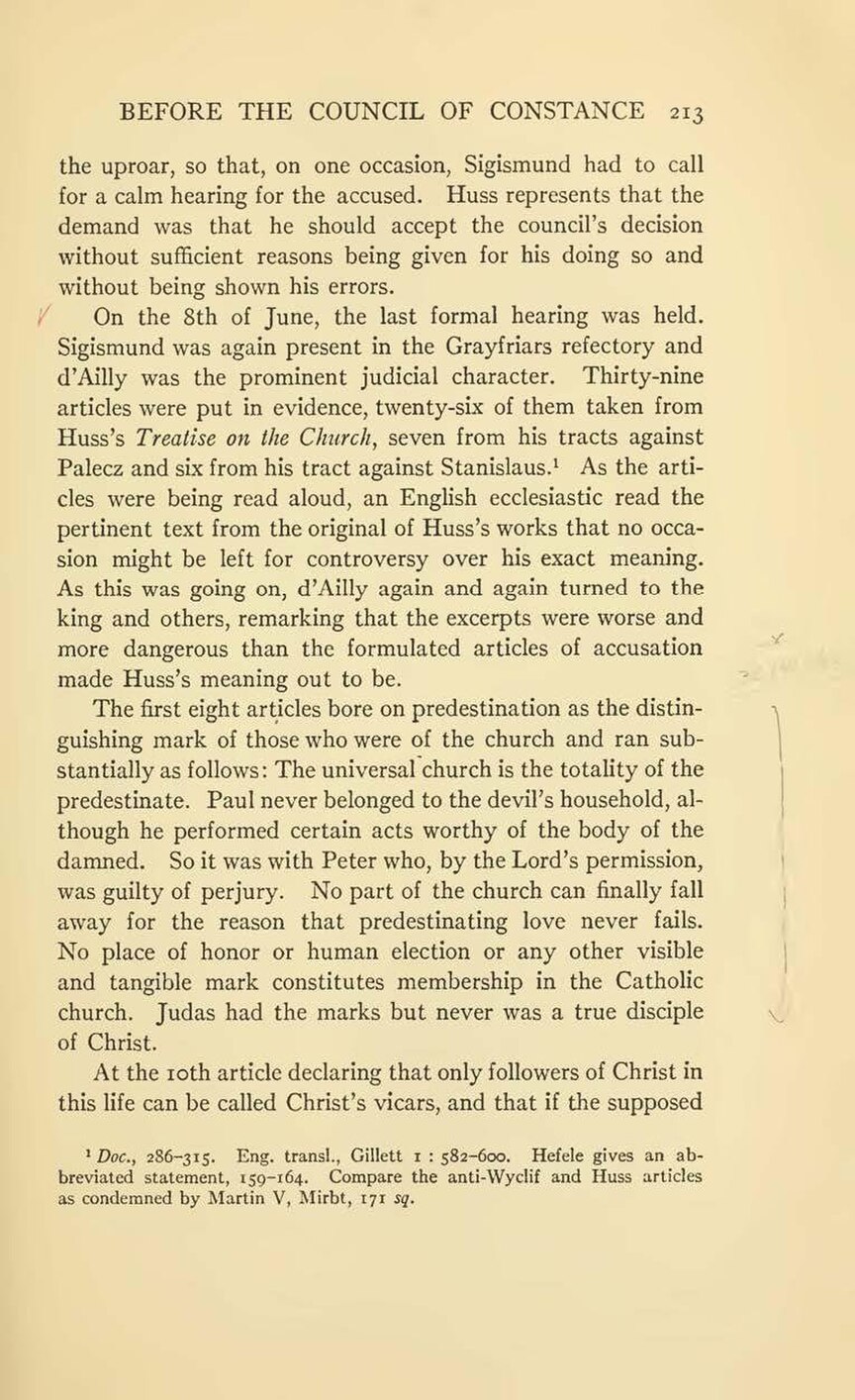the uproar, so that, on one occasion, Sigismund had to call for a calm hearing for the accused. Huss represents that the demand was that he should accept the council’s decision without sufficient reasons being given for his doing so and without being shown his errors.
On the 8th of June, the last formal hearing was held. Sigismund was again present in the Grayfriars refectory and d’Ailly was the prominent judicial character. Thirty-nine articles were put in evidence, twenty-six of them taken from Huss’s Treatise on the Church, seven from his tracts against Palecz and six from his tract against Stanislaus.[1] As the articles were being read aloud, an English ecclesiastic read the pertinent text from the original of Huss’s works that no occasion might be left for controversy over his exact meaning. As this was going on, d’Ailly again and again turned to the king and others, remarking that the excerpts were worse and more dangerous than the formulated articles of accusation made Huss’s meaning out to be.
The first eight articles bore on predestination as the distinguishing mark of those who were of the church and ran substantially as follows: The universal church is the totality of the predestinate. Paul never belonged to the devil’s household, although he performed certain acts worthy of the body of the damned. So it was with Peter who, by the Lord’s permission, was guilty of perjury. No part of the church can finally fall away for the reason that predestinating love never fails. No place of honor or human election or any other visible and tangible mark constitutes membership in the Catholic church. Judas had the marks but never was a true disciple of Christ.
At the 10th article declaring that only followers of Christ in this life can be called Christ’s vicars, and that if the supposed
- ↑ Doc., 286–315. Eng, transl., Gillett 1: 582–600. Hefele gives an abbreviated statement, 159–164. Compare the anti-Wyclif and Huss articles as condemned by Martin V. Mirbt, 171 sq.
